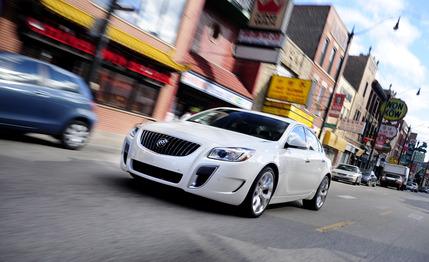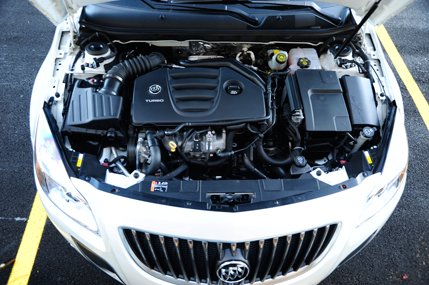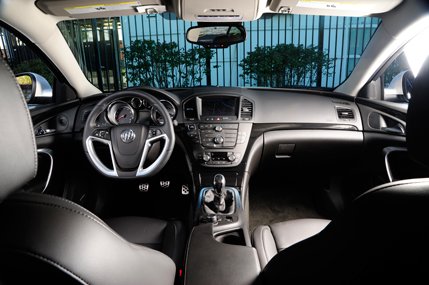 Instrumented Test
Instrumented Test

In search of a sporty mid-size car, boring old Buick went to Germany and borrowed Opel’s biggest sedan, the Insignia. Mission accomplished. No large car on sale between the Rhine and the Elbe lasts longer than a Munich minute if it hasn’t got the chops for the autobahn’s left lane. The 2012 Regal boasts a stouter chassis and skeleton than Buicks are usually known for, and a horsepower upgrade seemed natural. Herewith, the rebooted GS.

The last Regal Gran Sport—what those letters used to mean—was more or less a squishy old-school Buick packing a big V-6. It slid quietly out of the market in 2004. The 2012 GS intends to be a Euro sophisticate, with a compact engine producing surprising results. Displacing just two liters, the direct-injection turbo four makes 270 hp and 295 lb-ft of torque and powers the GS to 60 mph in 6.2 seconds. The EPA says it’ll get 19 mpg in the city and 27 on the highway with the six-speed manual (yes!).
A Solid Grasp of the Fundamentals
It’s somewhat spirited, but that acceleration time isn't quite as noteworthy as the car’s 3732-pound curb weight. In spite of its heft, the Regal hauls itself to a stop from 70 mph in 160 feet, the best performance stat it produces besides its 0.90 g of skidpad stick. Credit the super stick-o-matic Pirelli P Zero summer gums (wear rating of 220 and current Tire Rack price of $439 apiece—don’t say you weren’t warned).

It stops well, turns a good number on the skidpad, and exhibits hardly any roll, dip, or squat. But the performance Buick would be more fun if the remote steering offered more tactile enjoyment. How do you know it’s turning? Well, the scenery through the windshield shifts laterally and the steering wheel gets a bit heavier, but that’s it. The car does change direction quickly, however, and it behaves well approaching the grip limit, so we’re inclined to let it slide this time.
We’d also like a little more engine crackle to go with the car’s steamy looks. Turbo engines typically are muffled, but this one sounds as if it had cotton stuffed in its mouth. And the shifter is tight and moves easily through its gates, but the plastic-sliding-on-plastic feel isn’t especially rewarding. Someone who lays out for a GS presumably likes to drive; tackling sensory details such as these would help push the GS through the thick veil between good and great.
The interior is functional once you get to know the button layout, but it offers few new ideas and a lot of dark shades with colliding textures. The chrome rings on the gauge wells, although thoroughly tasteful, somehow look a bit five minutes ago. Don’t school buses have chrome-studded gauge clusters now? The Chevy Sonic’s digital/analog pseudo–motorcycle cluster has 10 times the inspiration at half the price. The Regal’s front seats offer good comfort and lateral support befitting a g-generator such as this one, but the back seats feel as if they were stuffed with stale bread and are much too hard. Three suspension settings range from a pleasant Buick float to a rather firm “GS” setting that dope-slaps the pavement on pocked roads but falls short of being too harsh.

Who’s More Teutonic?
If you’re craving something German, you might skip the middleman and spend roughly the same money on a Volkswagen Passat 3.6 SEL, which supplies similar acceleration and EPA fuel-economy numbers but weighs about 200 fewer pounds. Then again, the VW is built in Tennessee—so much for being German—and doesn’t offer a manual transmission. Plus, the Passat looks as though it were designed by the Chinese Ministry of Boring Ministries, whereas the GS is quite handsome. Previously noted oversights notwithstanding, it drives well, too. Well done, Opel—er, Buick.